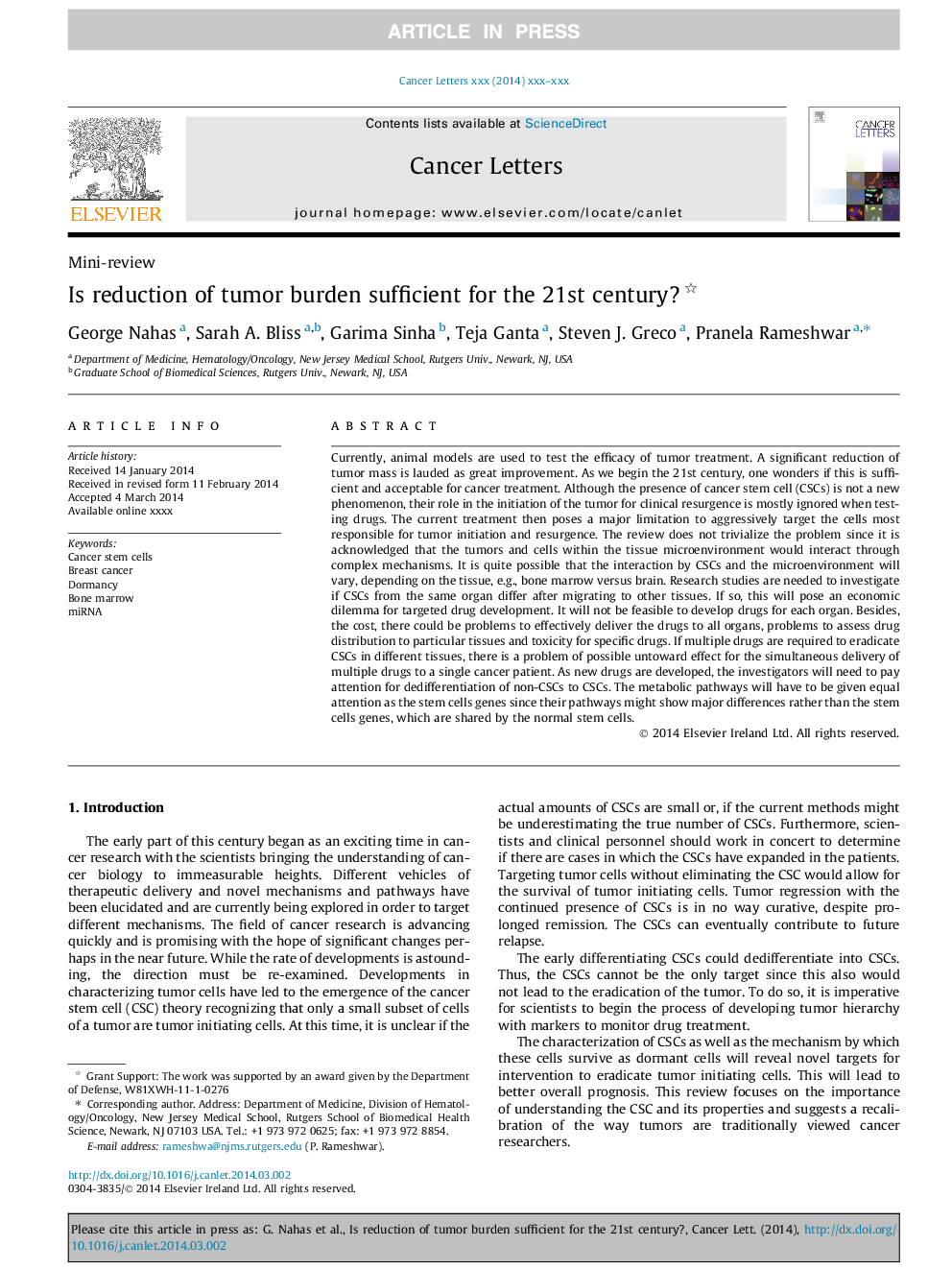| Article ID | Journal | Published Year | Pages | File Type |
|---|---|---|---|---|
| 10899761 | Cancer Letters | 2015 | 7 Pages |
Abstract
Currently, animal models are used to test the efficacy of tumor treatment. A significant reduction of tumor mass is lauded as great improvement. As we begin the 21st century, one wonders if this is sufficient and acceptable for cancer treatment. Although the presence of cancer stem cell (CSCs) is not a new phenomenon, their role in the initiation of the tumor for clinical resurgence is mostly ignored when testing drugs. The current treatment then poses a major limitation to aggressively target the cells most responsible for tumor initiation and resurgence. The review does not trivialize the problem since it is acknowledged that the tumors and cells within the tissue microenvironment would interact through complex mechanisms. It is quite possible that the interaction by CSCs and the microenvironment will vary, depending on the tissue, e.g., bone marrow versus brain. Research studies are needed to investigate if CSCs from the same organ differ after migrating to other tissues. If so, this will pose an economic dilemma for targeted drug development. It will not be feasible to develop drugs for each organ. Besides, the cost, there could be problems to effectively deliver the drugs to all organs, problems to assess drug distribution to particular tissues and toxicity for specific drugs. If multiple drugs are required to eradicate CSCs in different tissues, there is a problem of possible untoward effect for the simultaneous delivery of multiple drugs to a single cancer patient. As new drugs are developed, the investigators will need to pay attention for dedifferentiation of non-CSCs to CSCs. The metabolic pathways will have to be given equal attention as the stem cells genes since their pathways might show major differences rather than the stem cells genes, which are shared by the normal stem cells.
Related Topics
Life Sciences
Biochemistry, Genetics and Molecular Biology
Cancer Research
Authors
George Nahas, Sarah A. Bliss, Garima Sinha, Teja Ganta, Steven J. Greco, Pranela Rameshwar,
